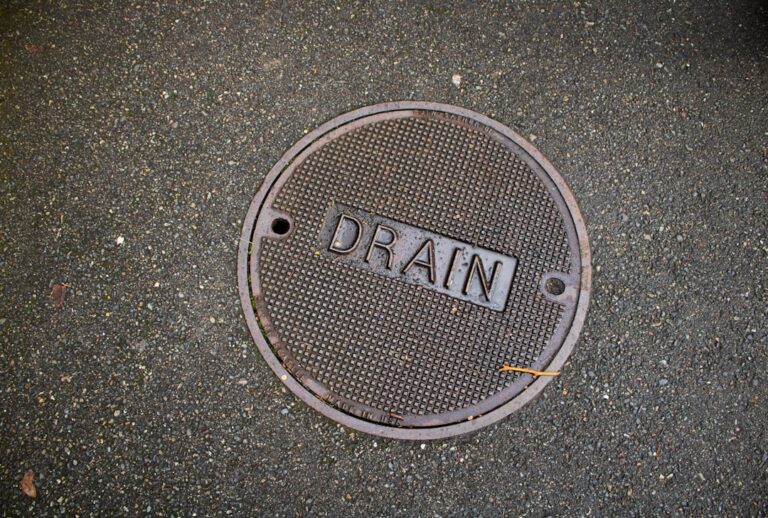Driver’s education plays a pivotal role in shaping responsible and skilled drivers. It serves as the foundation for understanding the rules of the road, the mechanics of vehicle operation, and the importance of safe driving practices. In an era where road safety is paramount, the significance of comprehensive driver education cannot be overstated.
It equips new drivers with essential knowledge about traffic laws, defensive driving techniques, and the consequences of reckless behavior. By instilling these principles early on, driver’s education helps to reduce accidents and fatalities on the roads. Moreover, driver’s education fosters a sense of responsibility among young drivers.
It emphasizes the importance of being aware of one’s surroundings, understanding the impact of distractions, and recognizing the dangers of impaired driving. Through structured lessons and practical experience, students learn to make informed decisions behind the wheel. This education not only prepares them for the driving test but also instills lifelong habits that contribute to safer roadways.
Key Takeaways
- Driver’s education is important for learning the rules of the road and developing safe driving habits.
- To find driver’s education programs near you, consider searching online, asking for recommendations, or contacting local driving schools.
- When looking for a driver’s education program, consider factors such as the instructor’s qualifications, curriculum, and class size.
- Taking a driver’s education course can lead to lower insurance rates, improved driving skills, and increased confidence on the road.
- Understanding the requirements for driver’s education, such as age restrictions and permit/license prerequisites, is crucial before enrolling in a program.
How to Find Driver’s Education Programs Near You
Finding a suitable driver’s education program can be a straightforward process if approached methodically. One of the most effective ways to begin your search is by utilizing online resources. Websites dedicated to driver education often provide comprehensive lists of programs available in various regions.
These platforms allow users to filter options based on location, course type, and even user reviews. Additionally, local Department of Motor Vehicles (DMV) websites frequently offer information about approved driver education providers, ensuring that you select a program that meets state requirements. Another valuable resource is community centers and high schools, which may offer driver education courses as part of their curriculum or extracurricular activities.
Many educational institutions recognize the importance of teaching students safe driving practices and may partner with certified instructors to provide these courses at little or no cost. Furthermore, word-of-mouth recommendations from friends, family, or colleagues can lead you to reputable programs that have successfully trained new drivers in your area. Engaging with local driving schools directly can also yield insights into their offerings, schedules, and pricing.
What to Look for in a Driver’s Education Program
When evaluating potential driver’s education programs, several key factors should be considered to ensure you choose one that aligns with your needs and expectations. First and foremost, accreditation is crucial; ensure that the program is recognized by your state’s DMV or equivalent authority. This guarantees that the curriculum meets established standards and that you will receive valid certification upon completion.
Additionally, look for programs that offer a blend of classroom instruction and behind-the-wheel training, as this combination provides a well-rounded educational experience. Instructor qualifications are another critical aspect to assess. Experienced instructors who possess valid teaching credentials and a deep understanding of traffic laws can significantly enhance the learning experience.
Instructors should be patient, approachable, and skilled at communicating complex concepts in an understandable manner. Furthermore, consider the class size; smaller groups often allow for more personalized attention and interaction with the instructor. Finally, inquire about the program’s flexibility in scheduling lessons, as accommodating your availability can make the learning process more convenient and effective.
The Benefits of Taking a Driver’s Education Course
| Benefits of Taking a Driver’s Education Course |
|---|
| 1. Reduced risk of accidents |
| 2. Lower insurance premiums |
| 3. Increased knowledge of traffic laws and regulations |
| 4. Better understanding of defensive driving techniques |
| 5. Improved confidence behind the wheel |
| 6. Potential for obtaining a driver’s license at a younger age |
Participating in a driver’s education course offers numerous advantages that extend beyond merely obtaining a driver’s license. One significant benefit is the potential for reduced insurance premiums.
This financial incentive can make a substantial difference in overall costs associated with vehicle ownership. Additionally, driver’s education courses often cover essential topics such as defensive driving techniques and hazard recognition. These skills are invaluable in real-world driving situations where quick decision-making can prevent accidents.
Students learn how to anticipate potential dangers on the road and respond appropriately, fostering a proactive approach to driving safety. Furthermore, many programs include simulations or practical exercises that help students develop confidence behind the wheel, making them more adept at handling various driving conditions.
Understanding the Requirements for Driver’s Education
Before enrolling in a driver’s education program, it is essential to understand the specific requirements set forth by your state or region. Generally, most states mandate that students must be at least a certain age—often around 15 or 16 years old—to participate in driver’s education courses. Additionally, some states may require students to obtain a learner’s permit before they can begin behind-the-wheel training.
This permit typically involves passing a written test that assesses knowledge of traffic laws and safe driving practices. Moreover, certain programs may have prerequisites regarding attendance or completion of specific coursework before students can progress to practical driving lessons. It is also important to be aware of any documentation needed for enrollment, such as proof of residency or identification.
Understanding these requirements upfront can streamline the enrollment process and ensure that students are adequately prepared for their educational journey.
Tips for Choosing the Right Driver’s Education Program

Selecting the right driver’s education program requires careful consideration and research. Start by identifying your specific needs; for instance, do you prefer an intensive course that condenses lessons into a short timeframe, or would you rather have a more extended program that allows for gradual learning? Once you have established your preferences, compare various programs based on their curriculum offerings and teaching methods.
Another critical factor is to read reviews and testimonials from former students. These insights can provide valuable information about the quality of instruction and overall satisfaction with the program. Additionally, consider visiting potential schools or contacting them directly to ask questions about their teaching philosophy, class structure, and any additional resources they may offer, such as online materials or practice tests.
Engaging with instructors before making a decision can also help gauge their expertise and approachability.
The Cost of Driver’s Education and Financial Assistance Options
The cost of driver’s education can vary significantly depending on factors such as location, program length, and included services. On average, students might expect to pay anywhere from $300 to $800 for a comprehensive course that includes both classroom instruction and behind-the-wheel training. Some programs may offer payment plans or package deals that can make the financial burden more manageable.
For those concerned about affordability, various financial assistance options may be available. Many states provide scholarships or grants specifically aimed at helping low-income individuals access driver education programs. Additionally, some community organizations or non-profits may offer funding or subsidized courses for eligible participants.
It is advisable to inquire about these options when researching programs to ensure that financial constraints do not hinder access to essential driver education.
What to Expect from a Driver’s Education Course
Enrolling in a driver’s education course typically involves a structured curriculum designed to cover both theoretical knowledge and practical skills necessary for safe driving. Students can expect to participate in classroom sessions where they will learn about traffic laws, road signs, vehicle operation, and safe driving techniques. These sessions often include interactive discussions and multimedia presentations that enhance understanding and retention of information.
In addition to classroom instruction, students will engage in behind-the-wheel training with certified instructors. This hands-on experience allows learners to apply what they have learned in real-world scenarios under professional guidance. During these sessions, students will practice essential skills such as parallel parking, lane changes, and emergency maneuvers while receiving constructive feedback from their instructors.
Overall, students should anticipate a comprehensive educational experience that prepares them not only for their driving test but also for a lifetime of responsible driving behavior on the road.
If you’re looking to enhance your driving skills and knowledge, you might be interested in exploring various educational resources available in your area. While searching for “drivers ed near me,” you might also find it beneficial to broaden your learning horizons by delving into other subjects. For instance, understanding the principles of safe driving can be complemented by a broader understanding of decision-making and critical thinking, which are often discussed in philosophical contexts. You can explore these concepts further in an article about philosophy, such as Exploring Western Philosophy: From Ancient Greece to Modern Perspectives. This article provides insights into how philosophical thinking has evolved and can offer a unique perspective on the decision-making processes involved in driving.
FAQs
What is drivers ed?
Drivers ed, short for driver’s education, is a formal class or program that prepares new drivers to obtain a driver’s license and become responsible and safe drivers.
What does drivers ed cover?
Drivers ed typically covers topics such as traffic laws, road signs, defensive driving techniques, and the dangers of driving under the influence of drugs or alcohol.
Why is drivers ed important?
Drivers ed is important because it provides new drivers with the knowledge and skills they need to safely operate a vehicle, understand traffic laws, and make responsible decisions while driving.
Where can I find drivers ed near me?
You can find drivers ed programs near you by searching online, asking for recommendations from friends or family, or contacting your local Department of Motor Vehicles for a list of approved providers.
What are the requirements for enrolling in drivers ed?
Requirements for enrolling in drivers ed vary by state and program, but typically include being a certain age (often 15 or 16), having a learner’s permit, and meeting any specific eligibility criteria set by the program provider.
How long does drivers ed typically take to complete?
The length of drivers ed programs can vary, but they often consist of a certain number of classroom hours and behind-the-wheel training sessions, which can take several weeks to complete.























+ There are no comments
Add yours